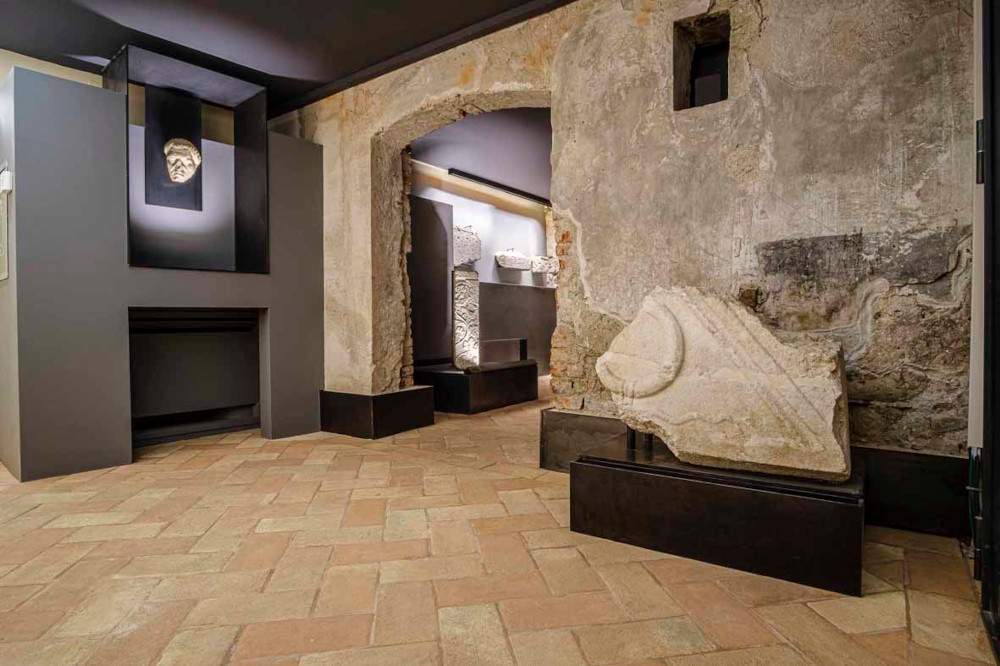From April 29, 2022, the new Archaeological Museum of Feltre will open its doors to the public, thanks to the City of Feltre in agreement with the relevant Archaeological Superintendency. The museum venue intends to document the events of Roman Feltria, which had jurisdiction over the Alpine valleys between Belluno and Trento; a vast territory that made Feltria among the most relevant centers of the upper Veneto mainland.
The museum aims to be of a new generation, a place for the exhibition of often unique artifacts, but also a place where History is told. It intends to offer a journey that begins inside the museum and then spreads throughout the entire city, leading to the places where the exhibits were found or where the main monuments of the Roman and, even earlier, Rhaetian city were placed. A thousand years of Feltre’s life, from the Rhaetian civilization to the fall of the Empire, are thus recounted. Each exhibit on display is paired with a digital in-depth system that connects to a web archive, which can be accessed via QR code directly on one’s smartphone. Other multimedia devices, such as video projectors, monitors, and loudspeakers, accompany the exhibition route, and make it interactive.
The new museum also intends to offer itineraries that ideally lead far away. As in the case of the very rare inscription of Anna Perenna, a singular and ambivalent deity figure witnessed in Feltre and in the Parioli district of Rome, where in very recent years a shrine of hers was found, with a cistern inside which archaeologists have found some 20 foils with curses and anthropomorphic figurines of organic material within small containers.
Also in Rome leads the funerary monument dedicated to Lucius Oclatius Florentinus, a Praetorian from Feltre of distinguished lineage who died at the age of twenty-four. “Buried twice,” in Feltre and in Rome, at the mouth of the Via Cassia. Two funerary monuments that will be reunited at the museum thanks to the loan of the second by the Roman Archaeological Museum in the capital. The cross-reading of these artifacts makes it possible to reconstruct the events of the largest known family unit of Roman Feltre.
Welcoming the visitor are Ionian-Italic capitals in soft Vicenza stone. The adjoining room, on the other hand, is devoted to small statuary and presents the refined taste of the ornaments of wealthy local dwellings between the 1st century BC and AD II. The small fountain, found in 1926 on Mezzaterra Street, evokes the gushes that must have resounded in an elegant garden, and the enigmatic smile of the Satyr’s Head, found not far away in 1935, leads into a world of myths related to Dionysus and his retinue. Unusual, however, are the circumstances of the discovery of the bust of Ephebe, a Roman copy of Polyclitus’ Narcissus, discovered in 1986 and walled up in the Bovio-Da Comirano buildings. In the room dedicated to cults, it is possible to admire the monumental statue of Aesculapius in Greek marble, which emerged during excavations in the cathedral forecourt in 1974, and which today constitutes the largest representation of the god of medicine in all of central and northern Italy, among the most iconic pieces in the Civic Archaeological Museum. Also, the votive altar of the very ancient goddess of Rome’s origins, the aforementioned Anna Perenna. Two other rooms offer a roundup of the funerary cults attested in the Feltrino area: from inscriptions, such as the one in Celio Montano with its elaborate carved decoration, to the fragment of an imposing sarcophagus from the Imperial age that emerged in the excavations of Palazzo Bizzarini in 2002. There is no shortage of artifacts found in burial areas of remote use such as that of the urban cemetery, which offer an example of the objects that accompanied the deceased on his or her journey to the afterlife: from personal ornaments to coins and furnishings in terracotta, blown glass and metal. Particular is the tomb of Aeronia Maxima found in Sovramonte in the 1950s.
For more info on hours and special openings: www.visitfeltre.info
 |
| New archaeological museum opens in Feltre, telling a thousand years of history |
Warning: the translation into English of the original Italian article was created using automatic tools. We undertake to review all articles, but we do not guarantee the total absence of inaccuracies in the translation due to the program. You can find the original by clicking on the ITA button. If you find any mistake,please contact us.